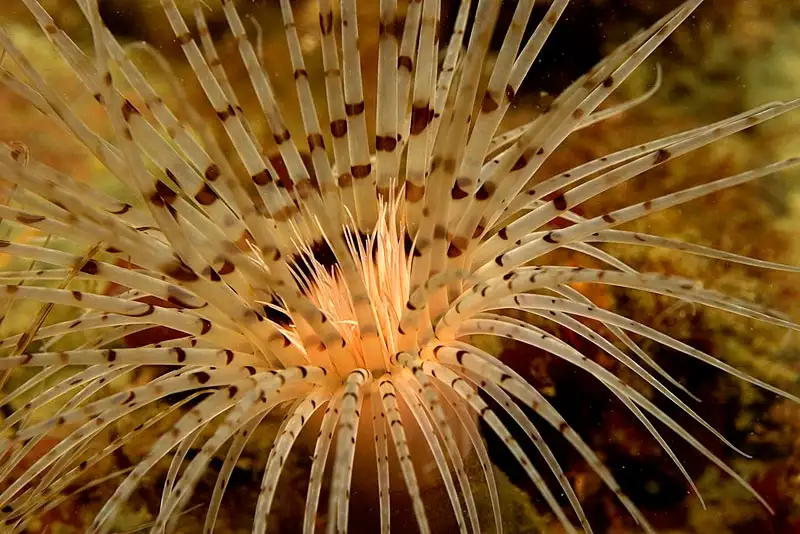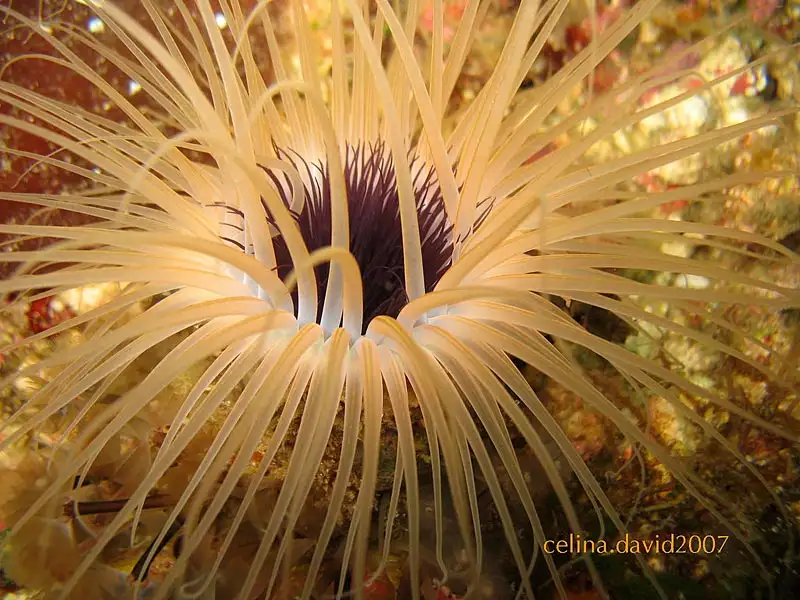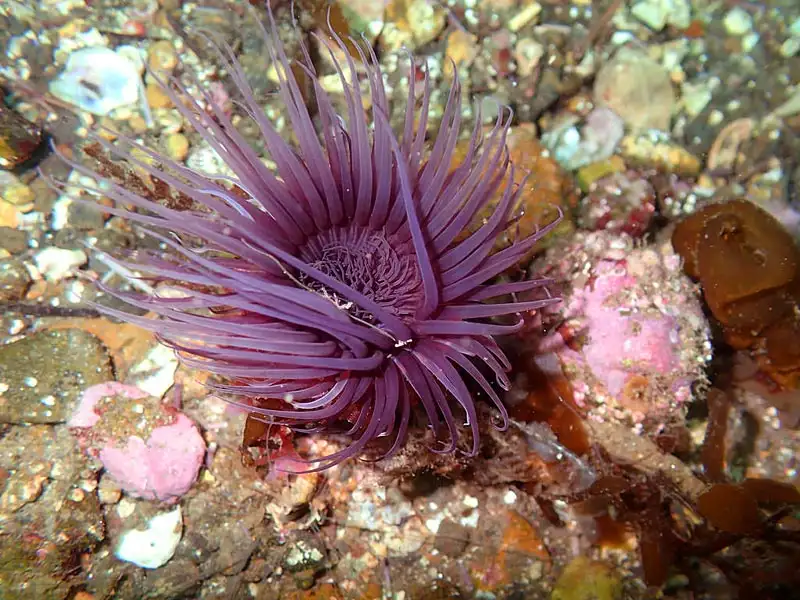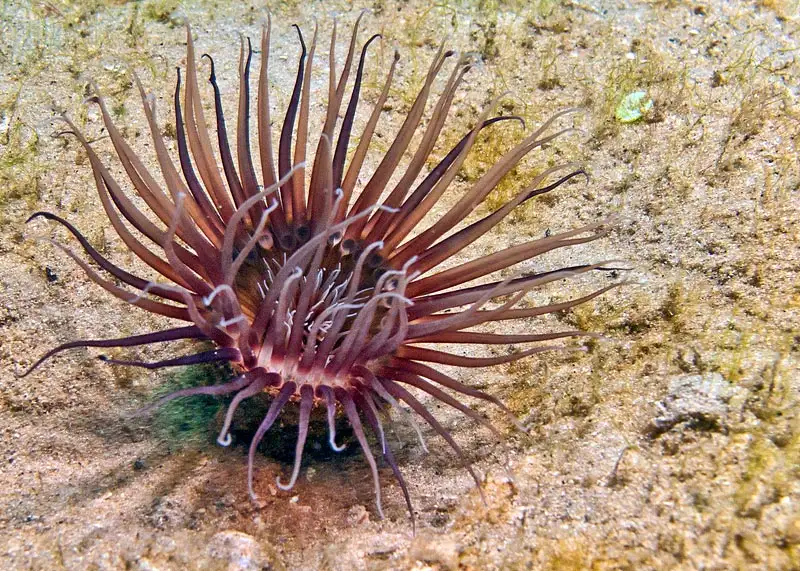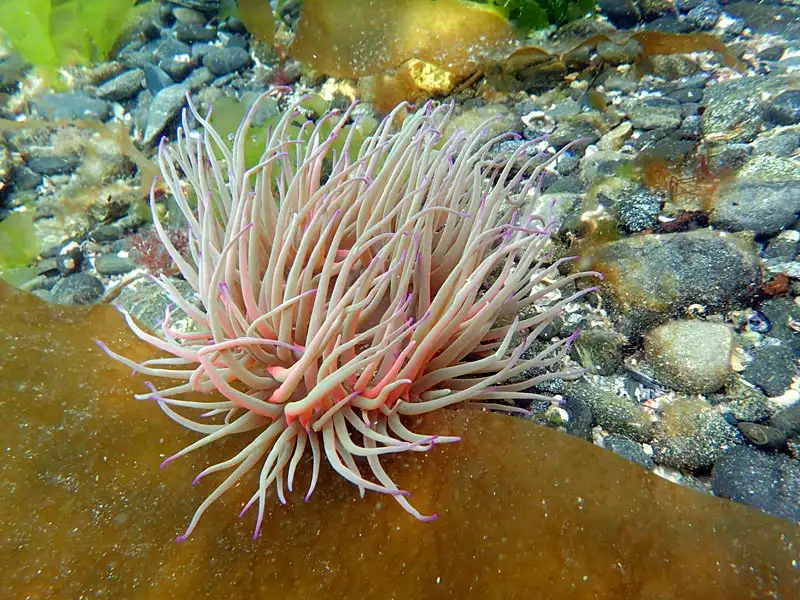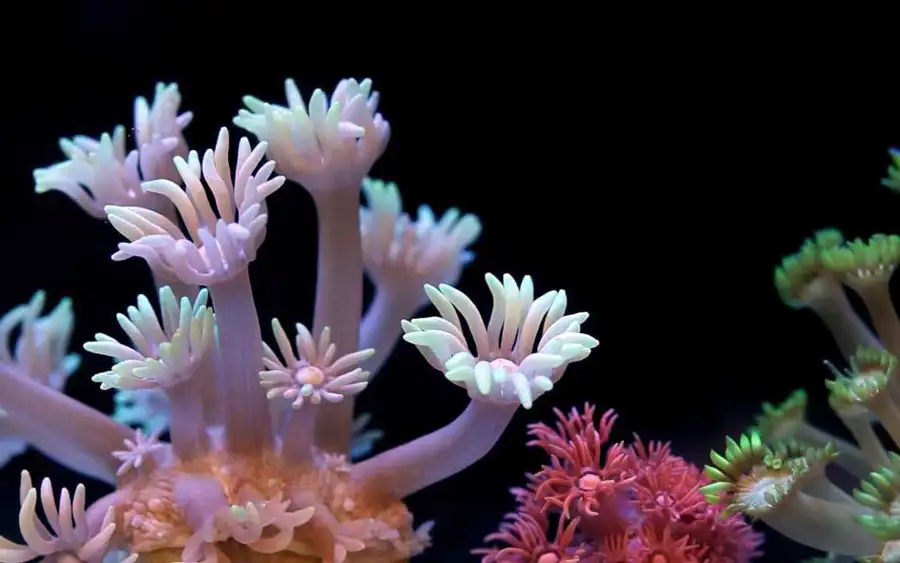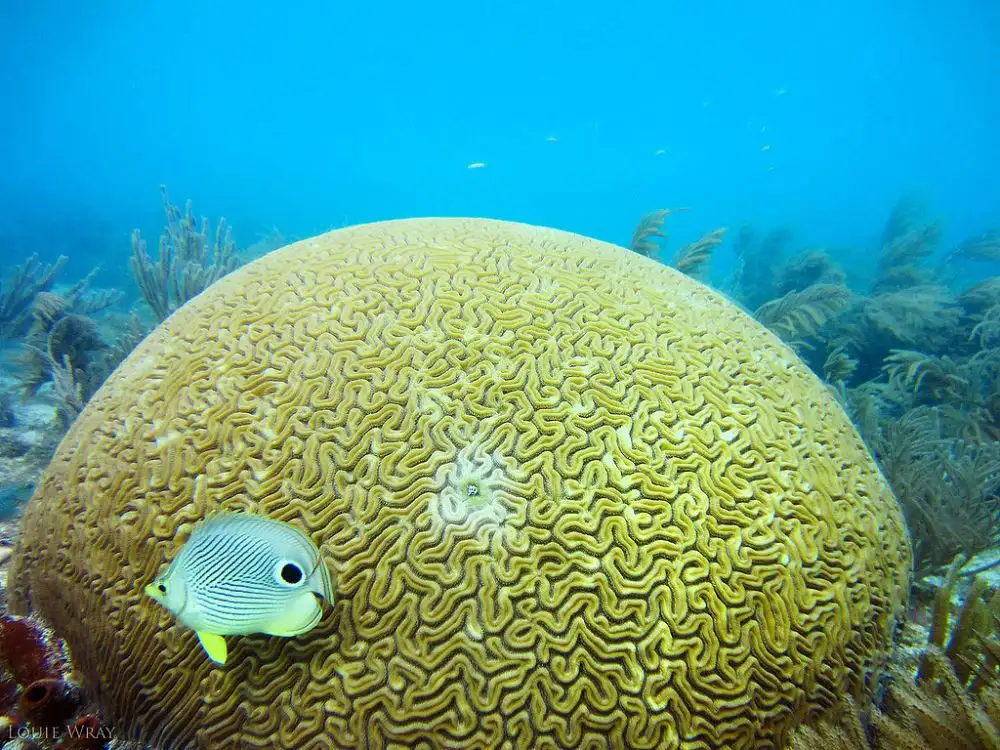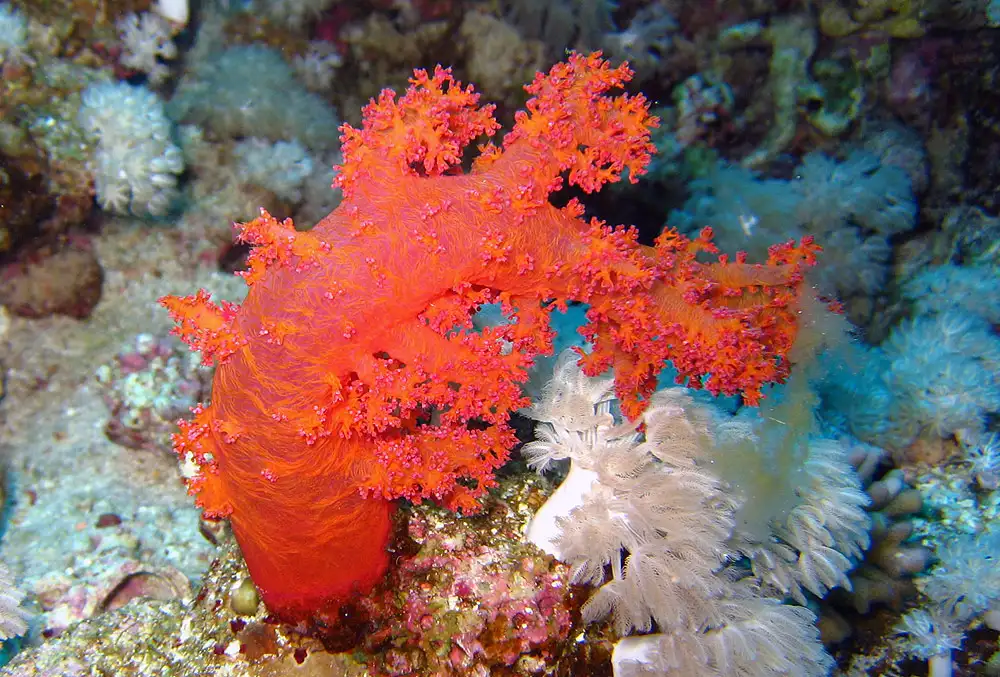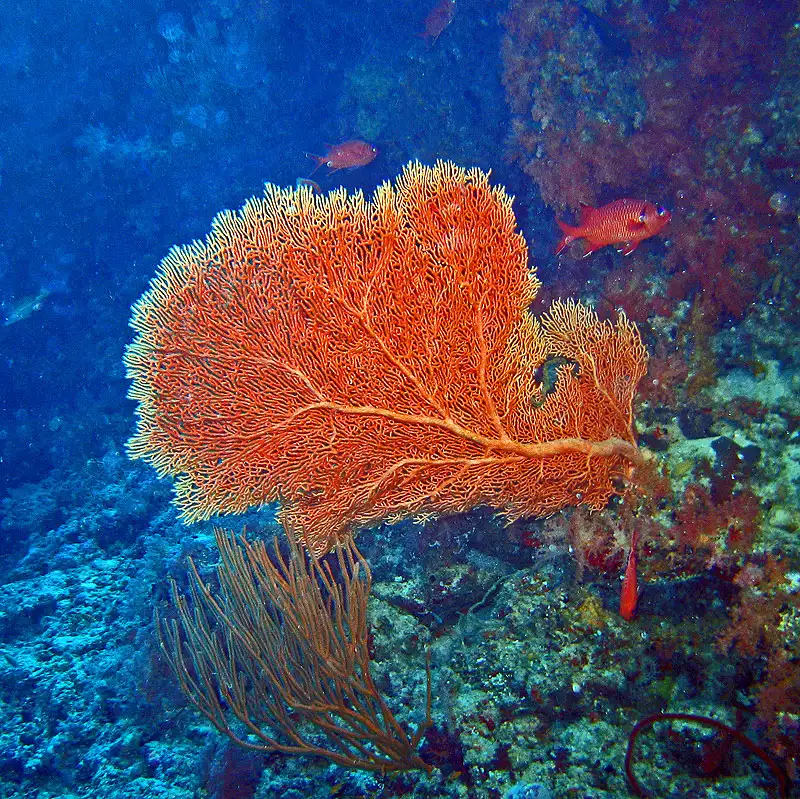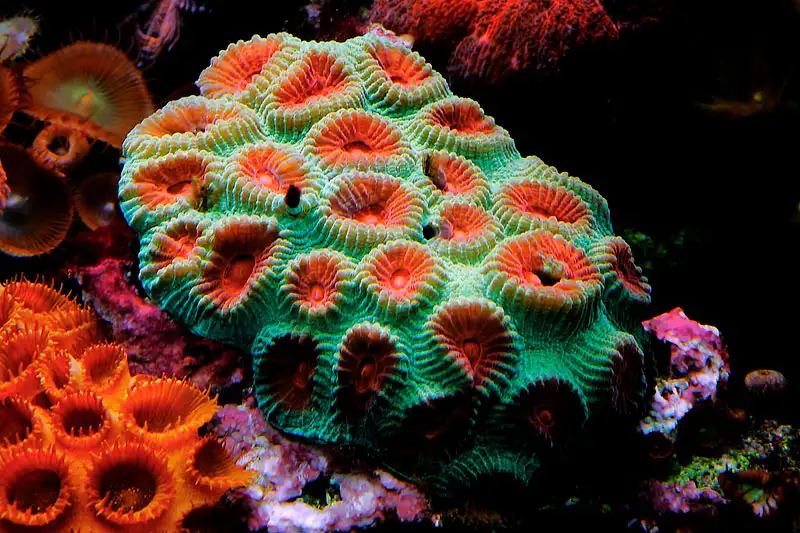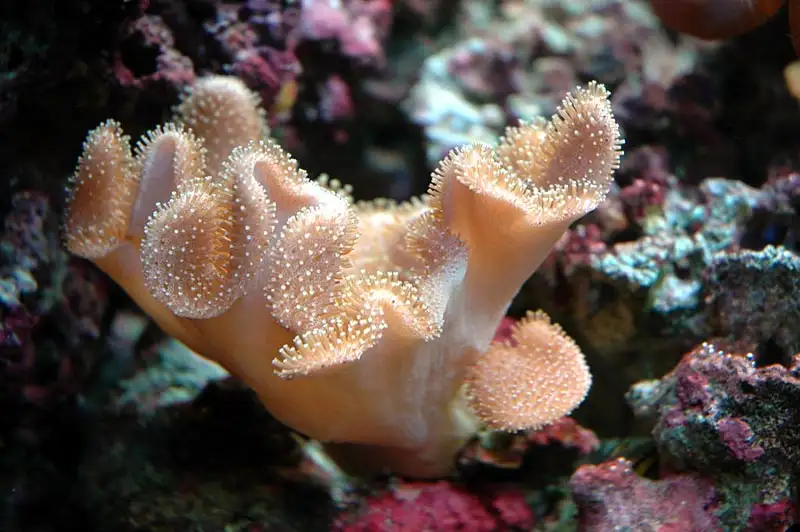Tube-dwelling Anemone
IUCN
LCBasic Information
Scientific classification
- name:Tube-dwelling Anemone
- Scientific Name:Cerianthus membranaceus
- Outline:Echinodermata
- Family:Ceriantharia Cerianthus
Vital signs
- length:Tube+body >30 cm; tentacle span ~10–25 cm
- Weight:Medium-sized benthic invertebrate; no standard mass value
- lifetime:Multi-year, site-faithful, long-lived
Feature
Builds and lives in a self-made soft tube in sand/mud; nocturnal expansion; ambush/suspension feeding on planktonic prey.
Distribution and Habitat
Mediterranean & E North Atlantic soft-bottom habitats (sand/mud, seagrass beds, lagoons, bays) from shallow waters to tens of metres.
Appearance
Two rings of tentacles: long colourful outer ring and shorter inner ring; highly variable colour patterns; most of body hidden in tube.
Details
Cerianthus membranaceus is a classic tube‑dwelling anemone (phylum Cnidaria; class Anthozoa; order Ceriantharia, family Cerianthidae). Instead of attaching to bare rock like typical sea anemones, it lives buried in a flexible tube that it secretes and reinforces with mucus, sediment and discarded stinging threads. Only the colourful crown of tentacles protrudes above the seabed.
Ecology & Behaviour
Sedentary: Usually anchored in sand or mud, exposing just the tentacles. When disturbed it can instantly withdraw into the tube.
Feeding: A sit‑and‑wait / suspension feeder. Long outer tentacles snare small crustaceans, zooplankton, larval fish and organic particles, then pass food to the shorter inner tentacles and mouth.
Tube building: It secretes mucus/polysaccharides and binds sediment grains and nematocyst threads into a tough felt‑like tube that extends deeper as it grows.
Nocturnal tendency: Individuals often expand fully at dusk/night.
Identification
It shows a striking double tentacle crown: a ring of long, flowing outer tentacles and a ring of shorter inner tentacles close to the mouth. Colours vary widely (yellow, orange, brown, pink, purple, white, translucent, banded), making it highly photogenic. Most of the body column is hidden inside the tube.
Size & Longevity
Expanded diameter (tentacles spread): typically ~10–25 cm, sometimes larger.
Total length (tube + body): can exceed 30 cm and even 40+ cm as the tube deepens.
Life: Considered a long‑lived, site‑faithful benthic invertebrate; lifespan spans multiple years but is not precisely standardized.
Range & Habitat
Native to the Mediterranean Sea and nearby eastern North Atlantic coasts. Prefers soft‑bottom coastal habitats such as sandy/muddy bottoms, seagrass beds, lagoons and sheltered bays in shallow water down to a few tens of metres, where it anchors its tube and extends its tentacles into the current.
Ecological role & threats
Micro‑predator / plankton feeder: influences small crustacean and larval fish communities in seagrass/soft‑bottom systems.
Habitat pressure: coastal pollution, eutrophication, dredging, trawling and anchoring can bury, tear or disturb its tube habitat.
IUCN: Generally regarded as Not Evaluated (NE) at the global Red List level, so it has no single worldwide threat category, though local populations may decline with habitat degradation.
FAQ
Q1. Is it a coral? It’s an anthozoan cnidarian, but not a stony coral; it’s a solitary tube anemone (order Ceriantharia).
Q2. Why “tube anemone”? It secretes a flexible organic tube, buries in sand/mud, and retracts instantly when disturbed.
Q3. Can it sting humans? Tentacles carry nematocysts that can irritate skin; avoid touching.
Q4. Can it be kept in aquaria? Possible for advanced keepers, but requires stable soft substrate, gentle flow and continuous fine planktonic foods; disturbance of the tube is often fatal.

